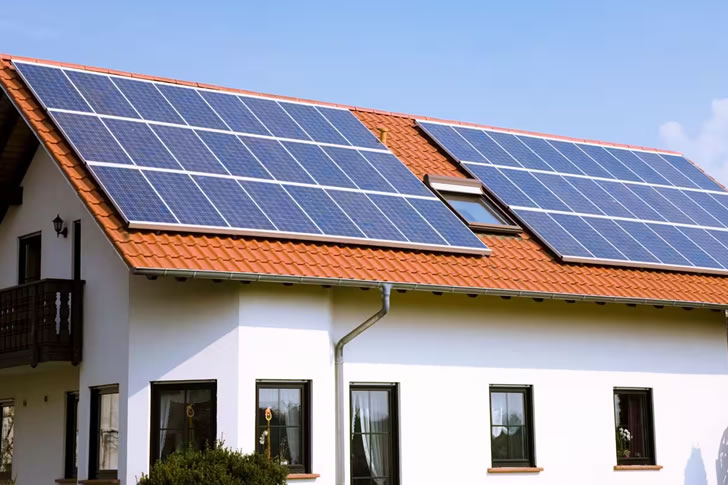Solar Panel Pricing Overview by Region
The cost of solar panels has seen a significant decline over the past decade, spurred by advances in technology, increased manufacturing efficiency, and more competitive market conditions. However, the pricing of solar panels can still vary widely depending on the region. This article aims to provide a detailed overview of solar panel pricing by region, incorporating recent data and trends to help prospective buyers understand what affects solar panel costs globally and regionally.

Global Solar Panel Pricing Trends
As of 2023, the global average cost for solar panels falls between $0.20 to $0.50 per watt. This benchmark price has come down from around $4 per watt a decade ago, reflecting significant technological advancements and increased production scales. The International Renewable Energy Agency (IRENA) reports that solar photovoltaic (PV) system prices have decreased by about 80% since 2010. This reduction in cost has been a pivotal factor in enabling broader adoption of solar energy across various parts of the world.
North America
In North America, particularly in the United States, the average cost of installed solar PV systems varies mainly by state due to differing local policies, labor costs, and incentives. On average, prices per watt range from $2.50 to $3.50, with the national average hovering around $3.00 per watt. Incentives like the federal solar tax credit, which offers a deduction of 26% off the cost of the solar system from federal taxes, significantly impact overall affordability. States like California and Texas, due to higher adoption rates and favorable solar conditions, also see more competitive pricing and quicker return on investment.
Europe
Europe has been a leader in solar power adoption, with countries such as Germany and Spain pioneering solar energy use despite less-than-ideal solar conditions compared to sunnier regions. The cost of solar panels in Europe typically ranges from €0.50 to €1.00 per watt. Government subsidies and a strong push for renewable energies have led to increased market maturity, which lowers costs. The European Union’s commitment to reducing greenhouse gas emissions by at least 55% by 2030 compared to 1990 levels continues to drive investment in solar technology across the continent.
Asia
Asia, led by China, has the largest manufacturing base for solar panels in the world. Costs in China are considerably lower due to massive production scales and government subsidies aimed at fostering domestic solar adoption and export markets. Prices per watt in China can be as low as $0.20, making it one of the cheapest markets for solar panels globally. Meanwhile, in India, another rapidly growing solar market, costs range around $0.30 to $0.40 per watt, supported by government incentives under the National Solar Mission.
Australia
Australia’s ample sunshine and supportive government policies have fostered a thriving solar industry. The cost of solar panels is around AUD$0.40 to $0.60 per watt. The national Renewable Energy Target (RET), along with feed-in tariff schemes and solar rebate programs, help reduce the upfront costs and enhance the feasibility of solar investments for both households and businesses. Similarly, New Zealand sees costs ranging from NZD$0.70 to $1.00 per watt, slightly higher due to smaller market size and fewer local manufacturers.
Africa
Africa’s vast solar potential is barely tapped. Costs in the region can vary widely, from $0.40 to $1.20 per watt, largely due to the logistical challenges and varying import tariffs applied to solar products. However, initiatives like the African Renewable Energy Initiative and international investments aimed at increasing solar capacity are slowly driving down costs and encouraging local market growth.
Latin America
Latin America has seen rapid growth in solar adoption, primarily driven by countries like Brazil, Chile, and Mexico. Solar panel costs range from $0.30 to $0.60 per watt. National policies and local incentives, including net metering and tax exemptions, have supported the installation of solar systems, making the region competitive with traditional power sources.
What Affects Solar Panel Costs?
Solar panel pricing can be influenced by several factors, including manufacturing costs, local market dynamics, import tariffs, and government incentives. Technological advances and economies of scale often tend to reduce costs over time. Moreover, the level of sunshine in a particular region plays a crucial role in determining the economic viability of installing solar panels. More sunlight means more generated power, offsetting the cost faster by reducing the utility bills more significantly.
Regional differences also dictate the feasibility and incentives for solar power. Countries with higher electricity prices or regions with strong commitments to renewable energy will generally offer more incentives and see quicker adoption rates, further pushing down prices locally.
In Conclusion
Understanding the regional differences in solar panel costs is essential for individuals and businesses considering solar investments. As global efforts to combat climate change intensify, the cost of solar energy is likely to continue its downward trend, making it an increasingly attractive option for sustainable and cost-effective power generation worldwide.







Recent Comments